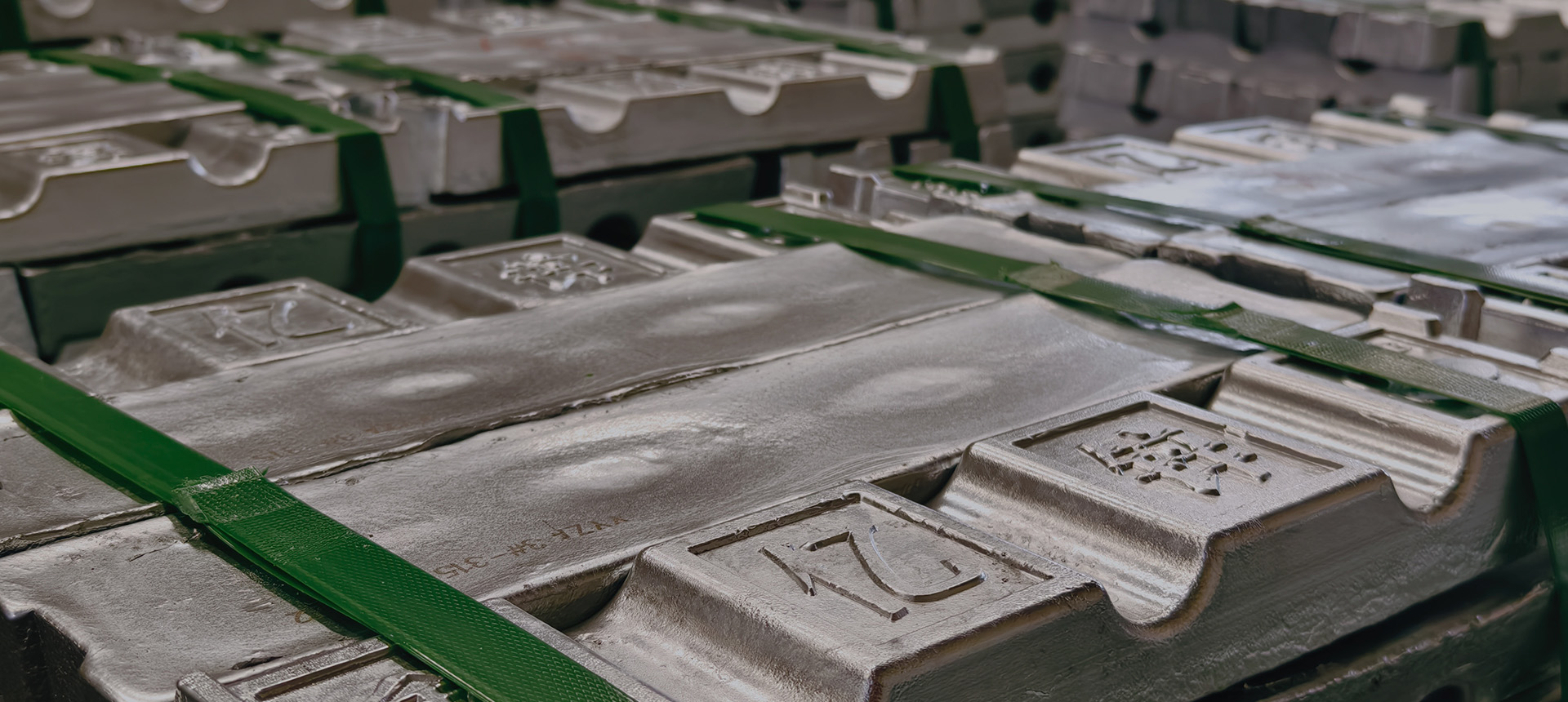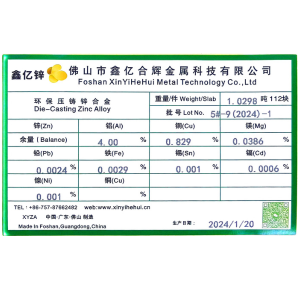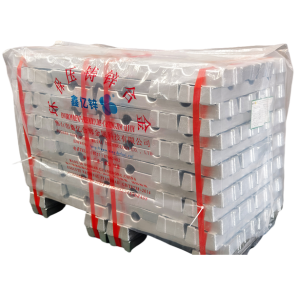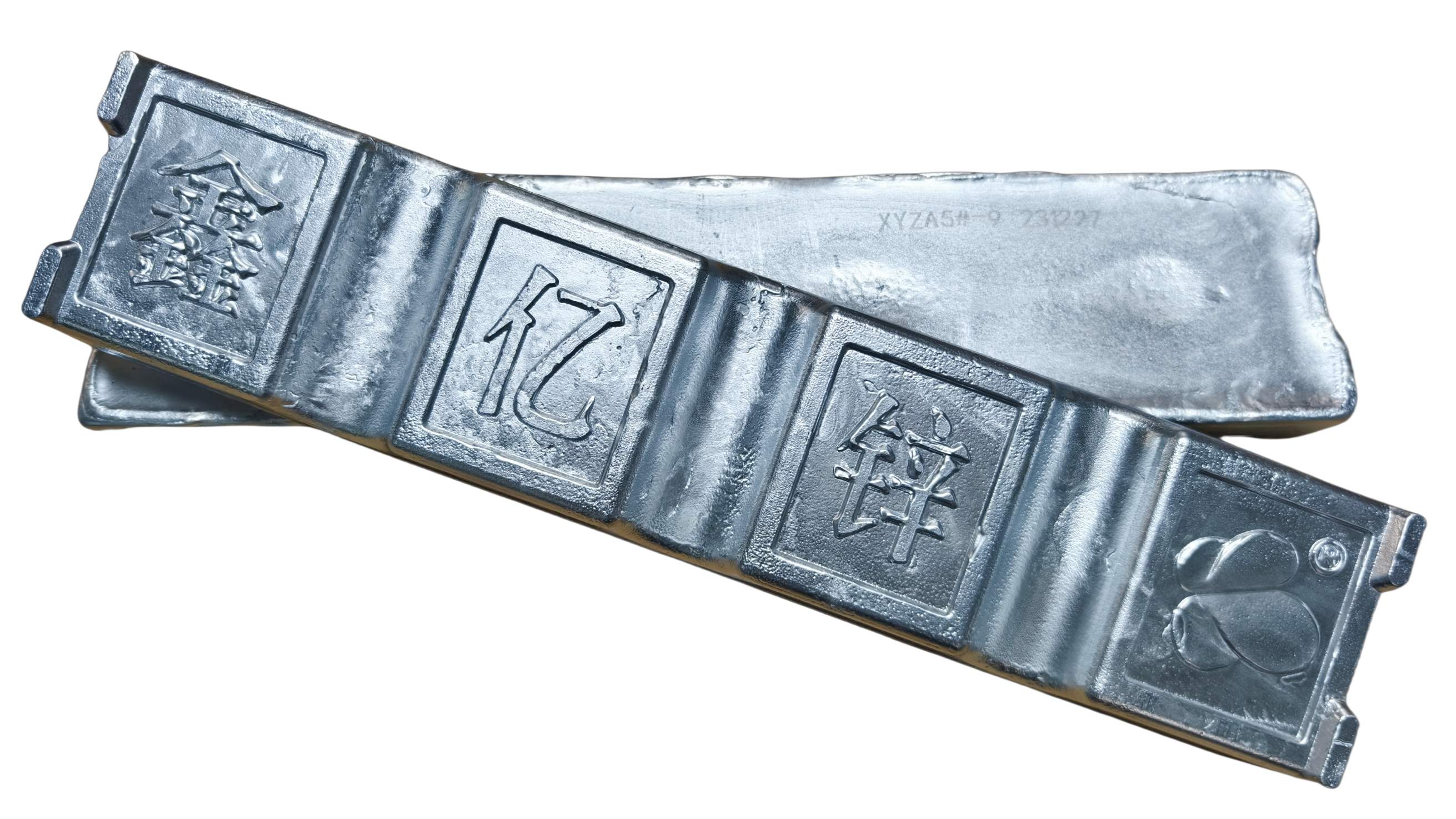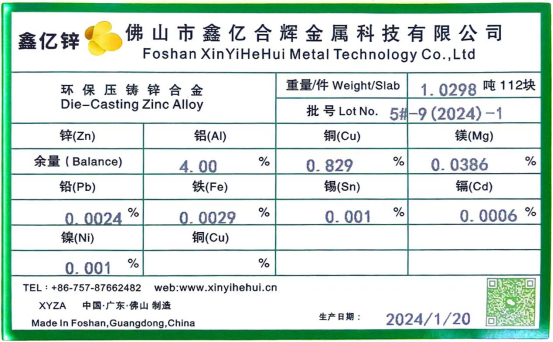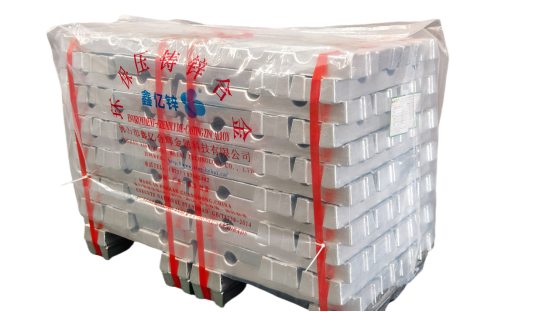Typical Mechanical Properties (Die Cast):
|
Ultimate Tensile Strength(Mpa) |
Yield Strength(Mpa) |
Elongation:% in 2" |
Hardness:Brinell |
|
328 |
228 |
7 |
91 |
Typical Physical Properties:
|
Density(g/cm³) |
Melting Range(°C/°F) |
Electrical Conductivity:%IACS |
Specific Heat (J/kg·°C) |
Die Shrinkage(in/in) |
|
6.76 |
380 - 386 (717 - 727) |
26 |
419 |
.007 |
Chemical Specification:
|
% By weight |
Ingot |
Casting |
|
Al |
3.9 - 4.3 |
3.7 - 4.3 |
|
Mg |
.03 -.06 |
.02 -.06 |
|
Cu |
.7 - 1.1 |
.7 - 1.2 |
|
Fe(max) |
.02 |
.05 |
|
Pb(max) |
.003 |
.005 |
|
Cd(max) |
.003 |
.004 |
|
Sn(max) |
.0015 |
.002 |
|
Ni |
- |
- |
|
Zn |
Balance |
Balance |

